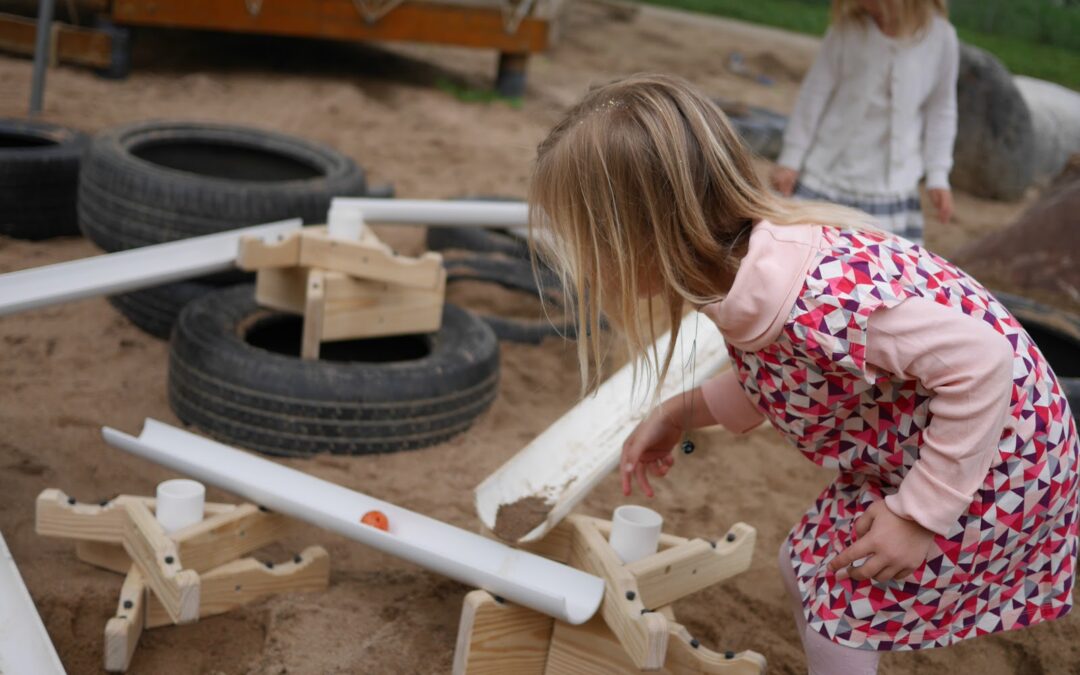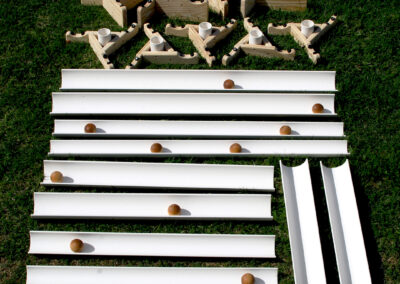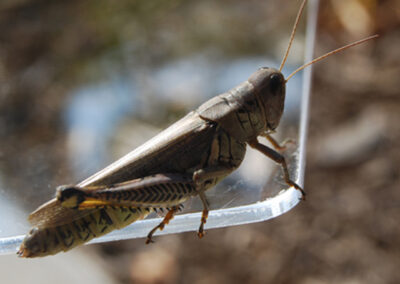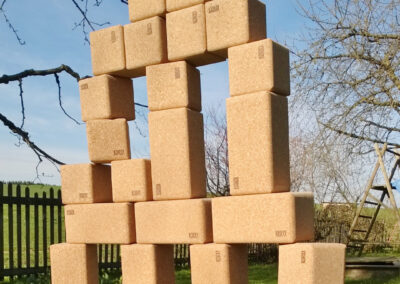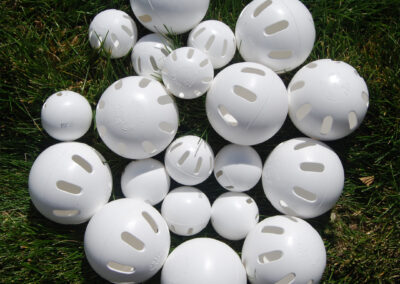By Diane Spahn and Kasey Kile
With warm weather here, children and adults are wanting to get back outdoors. Even with limitations currently in place, active play and learning is still vital! Most programs are in the process of assessing the tools and equipment that are easy to clean and support children’s physical and cognitive development.
As Kodo thinks about outdoor materials, loose parts, and additions to any playground without large structures, our team put together a list for consideration.
Keep children actively learning through play with the following materials that are easy to clean and sanitize:
- Balls, balls, and more balls – choose the types of balls that can be easily submerged in soapy water.
- Outdoor Ramps – Consider your own collection of gutters or tubes that can be easily washed. Some programs may have policies that do not allow for recyclable materials for safety purposes. If that is the case for your program, don’t hesitate to take a look at our outdoor ramps, tubes, teeter totter ramps, and more!
- Korxx Big Building Blocks – Korxx blocks and your own plastic or outdoor wooden building blocks can be submerged in soapy water or surface washed.
- Insect Observation Jars – A favorite of children and easy to submerge in soapy water after insects have been returned to their natural habitats under rocks or on leafy surfaces.
- Discovery Boards – Simple clear acrylic boards about the size of a piece of paper make fabulous viewing platforms for insects too.
- Plastic golf, bowling, and hula hoop sets – easily wash with soapy water and hose off after giving children a reason to move from head to toe.
- Trikes and other riding toys – clean with disinfectant wipes between riders. Tip: Create a trike parking space or gas station with sidewalk chalk. Color code the spots for children to easily recognize what is ready for use and what needs to be cleaned.
- Garden pots, beds, and tools – all garden tools can be washed up or cleaned with disinfectant wipes. Children can wear garden gloves or wash their hands frequently when caring for the plants in the garden spaces.
Tip: Did you know that our fabric bags are made out of recyclable materials and can be used as flower pots? Take a look at our sensory materials (buckwheat or canary seed) that can be planted inside for a quick sprout or use them as a sensory experience.
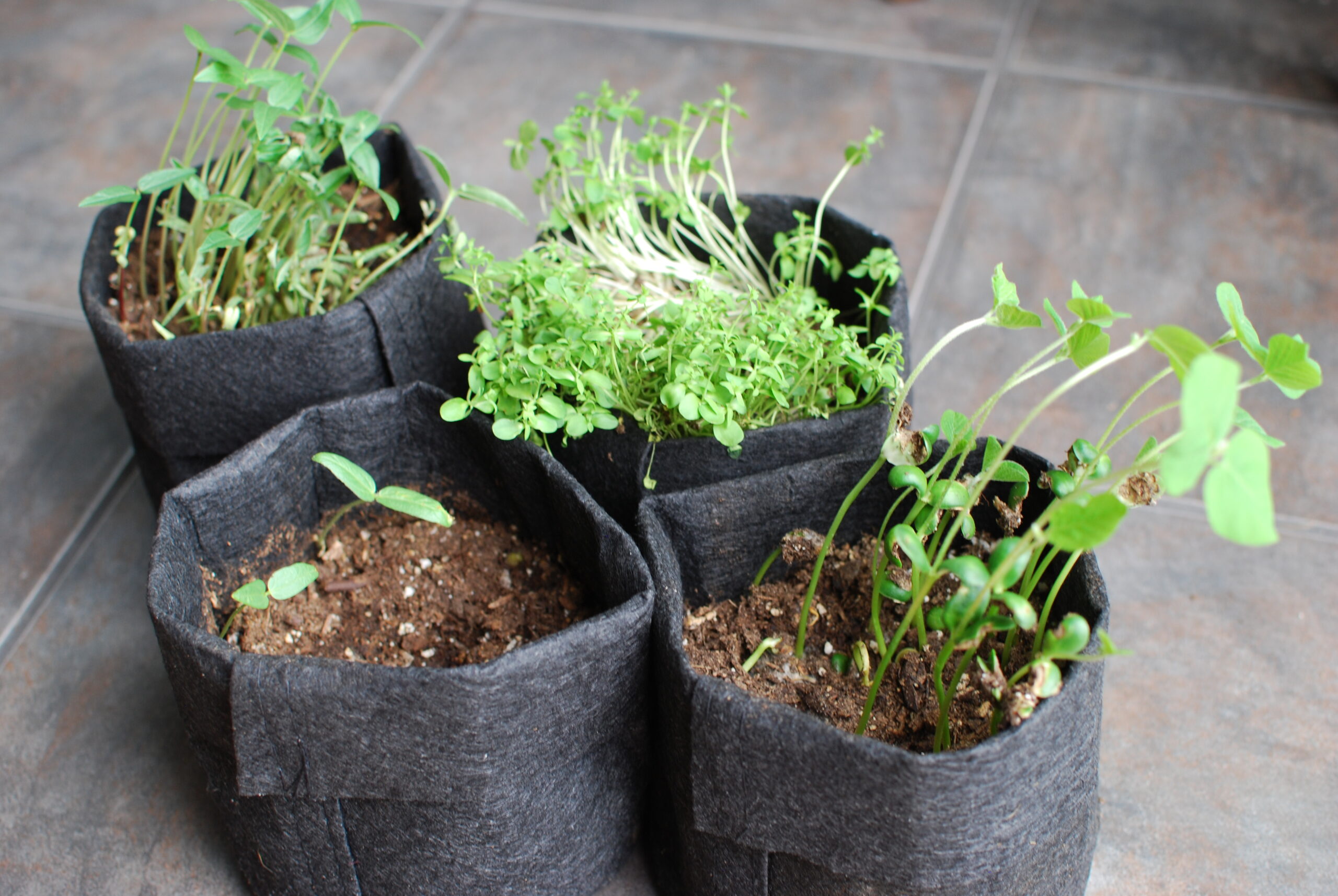
Children find joy in what may seem like the smallest things, however, they are normally ones that if we slow down are easy to incorporate into learning. When outdoors, consider what your environment holds for further investigation. For example, the patterns in brick or limestone paths, ants crawling in line, or even various textures on plants and trees. There are so many learning opportunities available when the weather warms up! Let us know about some of your favorite warm weather activities in the comments!

